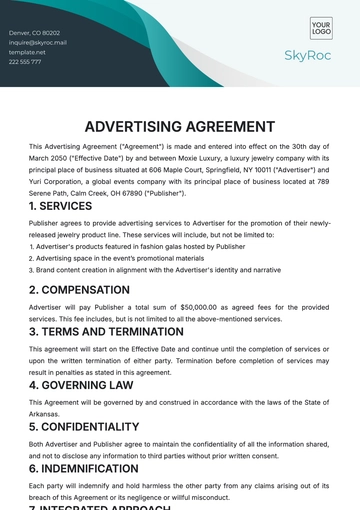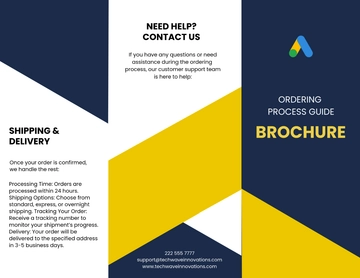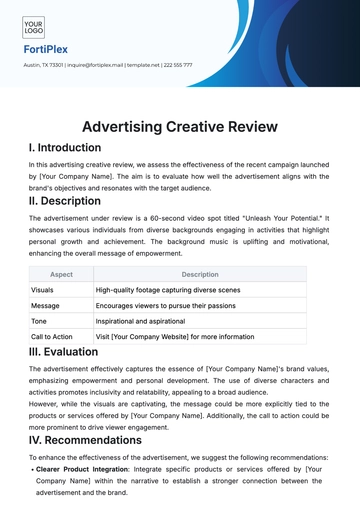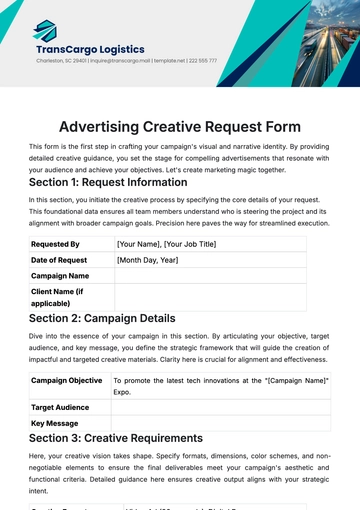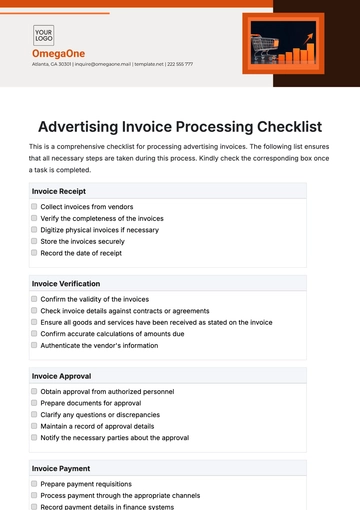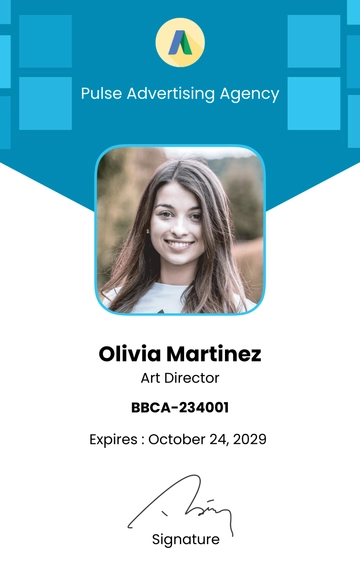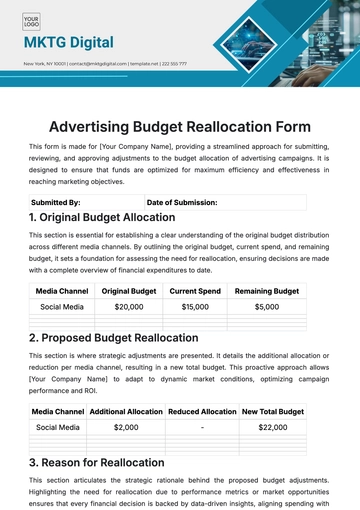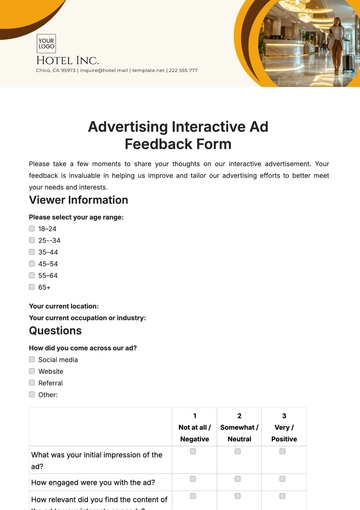Free Advertising Multichannel Campaign Management Guide
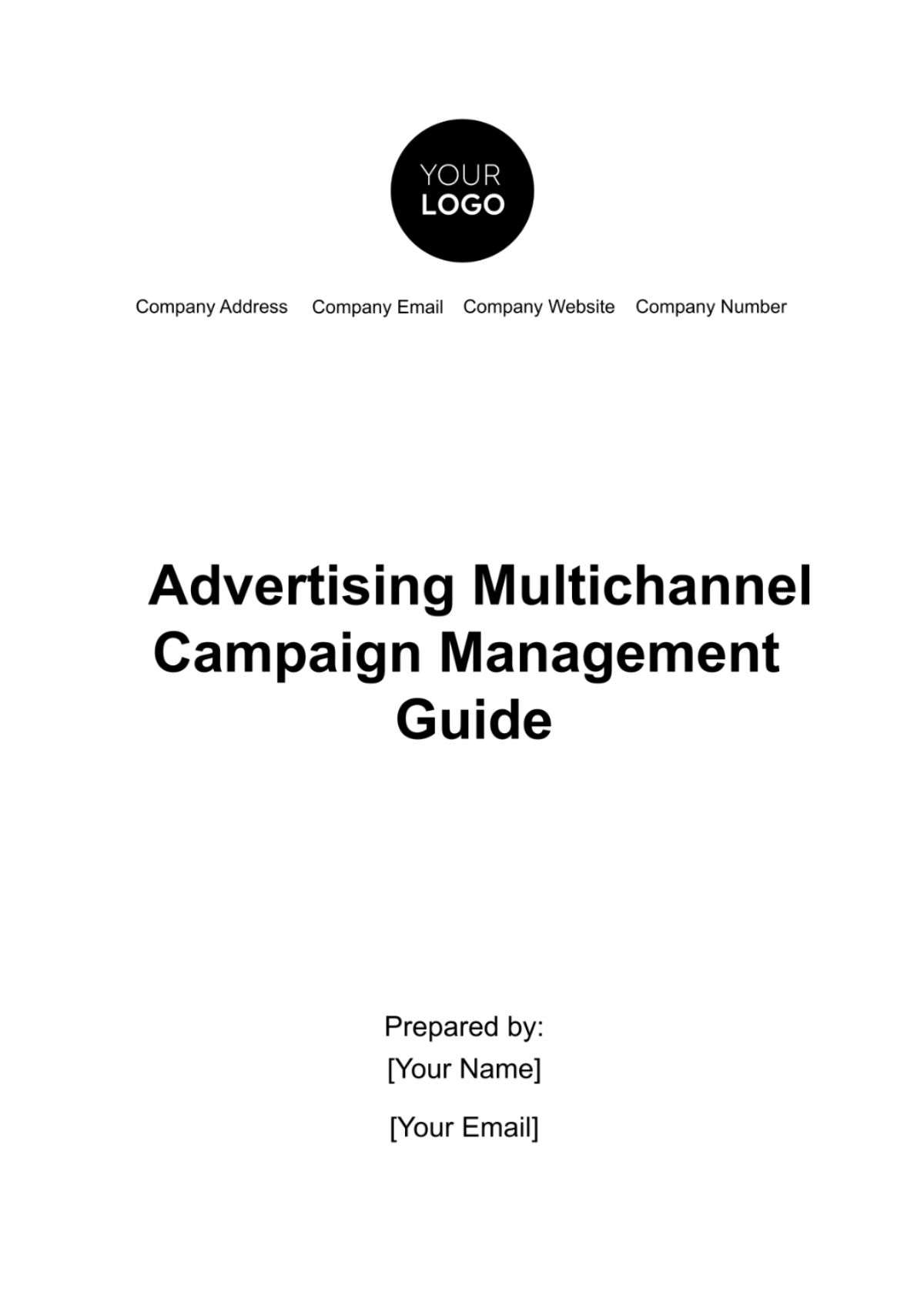
I. Introduction
A. Overview
In the realm of modern marketing, multichannel advertising campaigns have emerged as a crucial strategy for reaching and engaging with target audiences across various platforms. Unlike traditional single-channel campaigns, multichannel campaigns utilize a combination of digital and traditional channels to maximize exposure and impact.
Understanding Multichannel Advertising Campaigns
Multichannel advertising campaigns involve the simultaneous or sequential deployment of marketing messages across multiple channels, such as social media, search engines, television, radio, print, and more. The primary objective is to create a cohesive brand experience and reach customers wherever they are, thereby increasing brand visibility, engagement, and ultimately, conversions.
1.1 Definition and Purpose
Multichannel campaigns aim to leverage the strengths of different channels to communicate with diverse audience segments effectively. By diversifying the channels used for advertising, businesses can increase their chances of connecting with potential customers at various touchpoints along their purchasing journey. The overarching purpose of multichannel advertising is to deliver targeted, relevant messages to the right audience, at the right time, and through the right channels.
1.2 Importance of Multichannel Campaign Management
Effective management of multichannel campaigns is essential for ensuring consistency, coherence, and efficiency across all marketing efforts. Without proper management, businesses risk diluting their brand messaging, wasting resources on ineffective channels, and missing out on valuable opportunities to engage with their target audience. By adopting a strategic approach to multichannel campaign management, businesses can optimize their advertising efforts, drive meaningful interactions with customers, and ultimately achieve their marketing objectives.
Key Components of Multichannel Campaigns
Successful multichannel campaigns are built upon several key components, each of which plays a vital role in the overall effectiveness of the campaign.
2.1 Target Audience Identification
Central to any multichannel campaign is the identification of the target audience. Understanding the demographics, interests, and behavior of potential customers allows marketers to tailor their messages and select the most appropriate channels for reaching them. Through comprehensive audience research and segmentation, businesses can create personalized experiences that resonate with specific customer segments, driving higher engagement and conversion rates.
2.2 Channel Selection and Integration
Once the target audience is identified, the next step is to select and integrate the most suitable channels for reaching them. This involves evaluating the strengths and weaknesses of each channel in relation to the campaign objectives and audience preferences. By strategically combining digital channels such as social media, search engines, and email with traditional channels like television, radio, and print, businesses can create a cohesive multichannel strategy that maximizes reach and impact.
II. Planning Your Multichannel Advertising Campaign
A. Setting Objectives and Goals
Before launching a multichannel advertising campaign, it is essential to define clear objectives and establish measurable goals. Whether the goal is to increase brand awareness, drive website traffic, generate leads, or boost sales, having specific, achievable objectives provides a roadmap for success. By aligning campaign objectives with overall business goals, marketers can ensure that their multichannel efforts contribute to the broader strategic objectives of the organization.
B. Audience Segmentation
Audience segmentation is a critical aspect of multichannel campaign planning, as it enables marketers to tailor their messaging and content to different customer segments. By dividing the target audience into distinct groups based on demographics, psychographics, or behavioral attributes, businesses can deliver more relevant and personalized experiences that resonate with specific audience segments. This not only enhances the effectiveness of the campaign but also fosters stronger connections with customers by addressing their unique needs and preferences.
Buyer personas, or fictional representations of ideal customers, are often used to guide audience segmentation efforts. By creating detailed personas that capture the characteristics, goals, challenges, and pain points of different customer segments, marketers can gain valuable insights into the motivations and behaviors of their target audience. This information can then be used to develop tailored messaging, content, and offers that speak directly to the needs and interests of each persona, increasing the likelihood of engagement and conversion.
C. Budget Allocation
Determining the budget for a multichannel advertising campaign requires careful consideration of various factors, including the overall campaign objectives, the size and composition of the target audience, and the cost-effectiveness of different channels. Marketers must weigh the potential return on investment (ROI) of each channel against the associated costs to allocate resources effectively and maximize the impact of the campaign.
Allocating budget across channels involves striking a balance between reach, frequency, and engagement. While some channels may offer broad reach at a lower cost per impression, others may provide more targeted reach at a higher cost. By diversifying the budget across multiple channels and testing different strategies, marketers can optimize their advertising spend to achieve the desired outcomes within the constraints of the budget.
Overall, effective planning is essential for laying the foundation for a successful multichannel advertising campaign. By setting clear objectives, segmenting the target audience, and allocating resources strategically, marketers can create campaigns that resonate with their audience, drive meaningful engagement, and ultimately, deliver measurable results.
III. Selecting Channels for Multichannel Advertising
A. Understanding Different Channels
In today's digital age, marketers have access to a wide array of channels for reaching their target audience. Understanding the strengths and limitations of each channel is crucial for developing a successful multichannel advertising strategy.
Digital Channels
1.1 Social Media Advertising
Social media platforms such as Facebook, Instagram, Twitter, LinkedIn, and TikTok offer extensive targeting options and robust analytics, making them ideal for reaching specific audience segments. Social media advertising allows marketers to create highly engaging ad formats, including image ads, video ads, carousel ads, and sponsored posts, to capture the attention of their target audience.
1.2 Search Engine Marketing (SEM)
SEM, including pay-per-click (PPC) advertising on search engines like Google and Bing, enables marketers to display ads to users actively searching for relevant keywords or phrases. With SEM, advertisers can bid on keywords related to their products or services and appear at the top of search engine results pages (SERPs), increasing visibility and driving qualified traffic to their websites.
1.3 Display Advertising
Display advertising involves placing banner ads, text ads, or multimedia ads on websites, mobile apps, and other digital platforms. Display ads can be targeted based on factors such as demographics, interests, and browsing behavior, allowing advertisers to reach their target audience across the web. Programmatic advertising platforms automate the buying and placement of display ads, optimizing ad delivery in real-time to maximize performance and ROI.
Traditional Channels
2.1 Television Advertising
Television advertising remains a powerful medium for reaching mass audiences and building brand awareness. While the rise of digital streaming services has led to changes in TV viewing habits, traditional broadcast and cable television still offer unparalleled reach, particularly for large-scale national or regional campaigns. Marketers can leverage television ads to showcase products or services, tell compelling stories, and create emotional connections with viewers.
2.2 Radio Advertising
Radio advertising allows marketers to reach consumers while they are on the go, whether commuting to work, running errands, or exercising. With radio ads, advertisers can target specific demographics or geographic areas and deliver targeted messages to listeners based on their interests and preferences. Radio offers a cost-effective way to reach local audiences and reinforce brand messaging through repetitive exposure.
2.3 Print Advertising
Print advertising encompasses a variety of formats, including newspapers, magazines, direct mail, and outdoor advertising (e.g., billboards, posters). While print media has faced challenges in the digital age, it still holds value for certain demographics and niche markets. Print ads can be highly targeted based on readership demographics, interests, and geographic location, allowing advertisers to reach engaged audiences in specific regions or industries.
B. Channel Integration Strategy
Successful multichannel advertising campaigns require a cohesive approach to channel integration, ensuring that messaging and branding are consistent across all touchpoints.
Consistency Across Channels
Maintaining consistency in messaging, branding, and creative elements is essential for reinforcing brand identity and building trust with consumers. Whether a customer encounters an ad on social media, search engines, television, or print media, the messaging should remain consistent to create a unified brand experience. Consistency helps to reinforce key brand messages, establish credibility, and foster recognition and recall among target audiences.
Cross-Promotion Opportunities
Cross-promotion involves leveraging the strengths of one channel to promote content or offers on another channel, maximizing exposure and engagement. For example, a retailer could promote an exclusive discount code on social media and encourage followers to visit their website to redeem the offer. Similarly, a television ad could direct viewers to follow the brand on social media for behind-the-scenes content or additional discounts. By cross-promoting across channels, marketers can amplify their messaging and drive traffic and conversions across multiple touchpoints.
IV. Content Creation and Optimization
A. Crafting Compelling Content
Compelling content is at the heart of any successful advertising campaign, regardless of the channel or medium used. Effective content resonates with the target audience, captures their attention, and motivates them to take action.
Understanding Audience Preferences
Successful content creation begins with a deep understanding of the target audience— their needs, desires, pain points, and preferences. By conducting audience research and analysis, marketers can gain insights into the types of content that resonate most with their target audience. Whether it's informative blog posts, entertaining videos, inspiring stories, or interactive quizzes, content should be tailored to meet the specific needs and interests of the target audience.
Tailoring Content for Each Channel
While maintaining consistency in messaging and branding, it's essential to tailor content for each channel to maximize its effectiveness. What works on social media may not necessarily work on television or print media, and vice versa. Each channel has its unique characteristics, audience demographics, and content consumption habits, requiring marketers to adapt their content accordingly.
For example, social media audiences tend to prefer visually engaging content, such as images, videos, and infographics, that can be consumed quickly and easily on mobile devices. In contrast, television ads offer more extended storytelling opportunities, allowing brands to convey complex messages and evoke emotions through narrative-driven content.
B. Optimization Techniques
Optimizing content for maximum impact is an ongoing process that involves testing, analyzing, and refining various elements to improve performance.
Search Engine Optimization (SEO)
Search engine optimization (SEO) is essential for ensuring that content is discoverable and ranks prominently in search engine results pages (SERPs). By optimizing content for relevant keywords, improving website structure and navigation, and earning high-quality backlinks from authoritative sources, marketers can increase organic visibility and drive organic traffic to their websites.
A/B Testing for Ad Performance
A/B testing, also known as split testing, involves comparing two versions of an ad or landing page to determine which performs better in terms of engagement, conversions, or other key metrics. By testing different headlines, images, calls-to-action, or ad formats, marketers can identify what resonates most with their target audience and optimize their campaigns accordingly. A/B testing allows for data-driven decision-making, helping marketers to refine their content and maximize its effectiveness over time.
Overall, effective content creation and optimization are critical for driving engagement, conversions, and ROI in multichannel advertising campaigns. By understanding audience preferences, tailoring content for each channel, and continuously optimizing performance, marketers can create compelling experiences that resonate with their target audience and drive meaningful results.
V. Implementing and Managing Multichannel Campaigns
A. Campaign Execution Timeline
Launching a multichannel advertising campaign requires careful planning and coordination to ensure that all elements are executed smoothly and on schedule.
Setting Start and End Dates
The campaign timeline should specify the start and end dates for each phase of the campaign, including planning, execution, and analysis. By setting clear timelines, marketers can allocate resources effectively, prioritize tasks, and ensure that deadlines are met.
Scheduling Content Releases
For multichannel campaigns, it's essential to coordinate the release of content across all channels to maintain consistency and maximize impact. Marketers should develop a content calendar outlining the timing and frequency of content releases for each channel, taking into account factors such as audience engagement patterns, peak times, and campaign objectives.
B. Campaign Management Tools
Managing multichannel campaigns effectively requires the use of specialized tools and software to streamline processes, track performance, and optimize results.
Advertising Platforms
Advertising platforms such as Google Ads, Facebook Ads Manager, and LinkedIn Campaign Manager provide robust tools for creating, managing, and optimizing ad campaigns across various channels. These platforms offer advanced targeting options, ad formats, and analytics capabilities, allowing marketers to reach their target audience with precision and measure the impact of their campaigns in real-time.
Analytics and Tracking Software
Analytics and tracking software are essential for monitoring campaign performance, analyzing data, and making informed decisions. Tools such as Google Analytics, Adobe Analytics, and HubSpot provide insights into key metrics such as website traffic, conversions, and customer engagement, enabling marketers to evaluate the effectiveness of their multichannel campaigns and identify areas for improvement.
VI. Monitoring and Analyzing Campaign Performance
A. Key Metrics to Track
Tracking key performance metrics is essential for evaluating the success of a multichannel advertising campaign and identifying areas for optimization.
Impressions and Reach
Impressions measure the number of times an ad is displayed to users, while reach refers to the total number of unique users who have seen the ad. Monitoring impressions and reach provides insights into the overall visibility and exposure of the campaign across different channels and audience segments.
Click-Through Rate (CTR)
Click-through rate (CTR) measures the percentage of users who click on an ad after seeing it. A high CTR indicates that the ad is resonating with the target audience and driving engagement. Monitoring CTR helps marketers evaluate the effectiveness of ad creative, messaging, and targeting strategies and make adjustments as needed to optimize performance.
Conversion Rate
Conversion rate measures the percentage of users who complete a desired action, such as making a purchase, filling out a form, or subscribing to a newsletter, after clicking on an ad. Monitoring conversion rate provides insights into the effectiveness of the campaign in driving meaningful actions and generating tangible results for the business.
B. Analyzing Data
Analyzing campaign data involves examining key metrics, identifying trends and patterns, and drawing actionable insights to improve campaign performance.
Identifying Trends and Patterns
By analyzing data over time, marketers can identify trends and patterns in user behavior, audience engagement, and campaign performance. For example, they may discover that certain ad creative performs better on specific channels or that certain audience segments are more responsive to particular messaging. Identifying these trends allows marketers to refine their strategies and allocate resources more effectively to maximize ROI.
Making Data-Driven Decisions
Data-driven decision-making involves using insights from campaign analytics to inform strategy, optimize tactics, and allocate resources effectively. By leveraging data to identify what's working and what's not, marketers can make informed decisions about where to invest their time, budget, and effort to achieve the best results. Whether it's adjusting ad creative, refining targeting parameters, or reallocating budget across channels, data-driven decisions help marketers optimize campaign performance and drive meaningful business outcomes.
VII. Optimizing and Iterating Multichannel Campaigns
A. Continuous Improvement Strategies
Continuous improvement is key to maximizing the effectiveness of multichannel advertising campaigns. By regularly reviewing performance metrics and experimenting with new strategies, marketers can optimize their campaigns to achieve better results over time.
Reviewing Performance Metrics
Regularly monitoring performance metrics is essential for identifying areas of strength and opportunities for improvement within a multichannel campaign. Marketers should track key metrics such as impressions, click-through rate (CTR), conversion rate, and return on investment (ROI) to gauge the effectiveness of their advertising efforts across different channels. By analyzing these metrics, marketers can identify which channels, messages, and tactics are driving the best results and allocate resources accordingly.
Experimenting with New Strategies
Experimentation is crucial for staying ahead in the rapidly evolving landscape of multichannel advertising. Marketers should continuously test new strategies, ad formats, messaging variations, and targeting parameters to identify what resonates most with their target audience. A/B testing, multivariate testing, and controlled experiments can help marketers evaluate the impact of changes systematically and make data-driven decisions about which strategies to adopt, refine, or discard.
B. Iterative Campaign Optimization
Iterative optimization involves making incremental improvements to a multichannel campaign based on ongoing analysis and feedback. By iterating on campaign elements such as ad creative, targeting criteria, bidding strategies, and messaging, marketers can refine their approach over time to achieve better results.
Adjusting Ad Creative
Ad creative plays a crucial role in capturing audience attention and driving engagement in multichannel campaigns. Marketers should continuously evaluate the performance of different creative assets, such as images, videos, headlines, and ad copy, to identify which elements resonate most with their target audience. By testing new creative variations and iterating based on performance data, marketers can optimize ad creative to maximize impact and relevance.
Refining Targeting Parameters
Effective audience targeting is essential for reaching the right audience with the right message at the right time. Marketers should regularly review and refine their targeting parameters based on campaign performance and audience insights. This may involve adjusting demographic criteria, geographic targeting, interests and behaviors, or custom audience segments to improve audience relevance and increase campaign effectiveness.
VIII. Conclusion
A. Summary of Key Points
Multichannel advertising campaigns offer businesses a powerful opportunity to reach and engage with their target audience across multiple touchpoints. By leveraging a combination of digital and traditional channels, marketers can create cohesive brand experiences that resonate with consumers and drive meaningful results.
B. Final Recommendations
To maximize the effectiveness of multichannel campaigns, marketers should:
Set clear objectives and goals aligned with business objectives.
Identify and segment target audiences to deliver personalized experiences.
Allocate budget strategically across channels to maximize reach and impact.
Create compelling content tailored to the preferences of each channel.
Monitor campaign performance closely and adjust strategies based on data-driven insights.
Continuously experiment, iterate, and optimize to improve campaign effectiveness over time.
C. Next Steps for Successful Multichannel Campaign Management
As businesses continue to adapt to changing consumer behaviors and technological advancements, the importance of multichannel advertising will only grow. By embracing a data-driven approach to campaign management, staying agile and adaptable, and prioritizing continuous improvement, marketers can position their brands for success in an increasingly competitive marketplace.
- 100% Customizable, free editor
- Access 1 Million+ Templates, photo’s & graphics
- Download or share as a template
- Click and replace photos, graphics, text, backgrounds
- Resize, crop, AI write & more
- Access advanced editor
Craft and manage successful multichannel campaigns with ease using our Advertising Multichannel Campaign Management Guide Template from Template.net. Editable and customizable, this template ensures seamless coordination across various channels, maximizing campaign effectiveness. Compatible with our Ai Editor Tool, streamline your campaign management process and achieve unparalleled results. Elevate your advertising strategies with this comprehensive guide.

